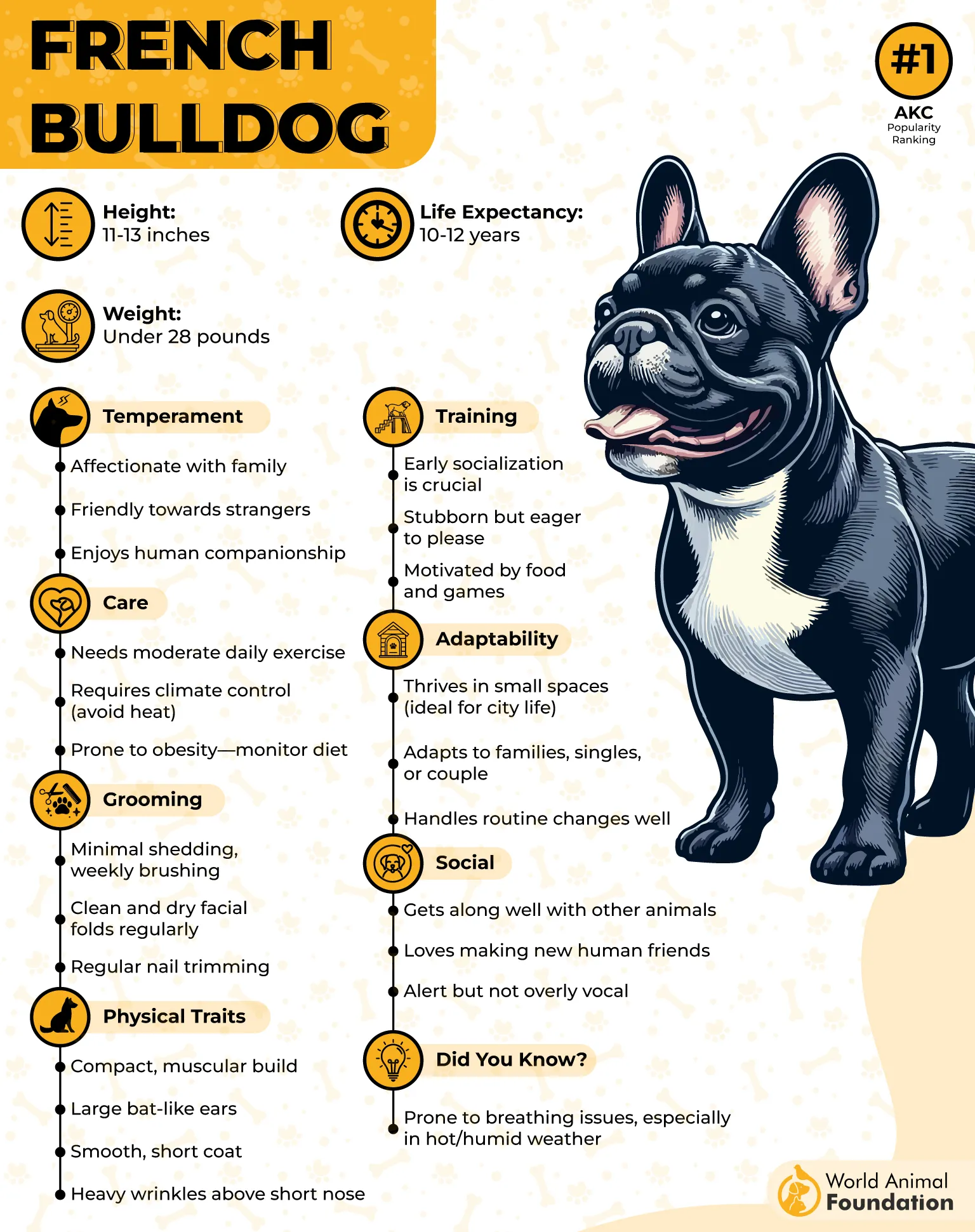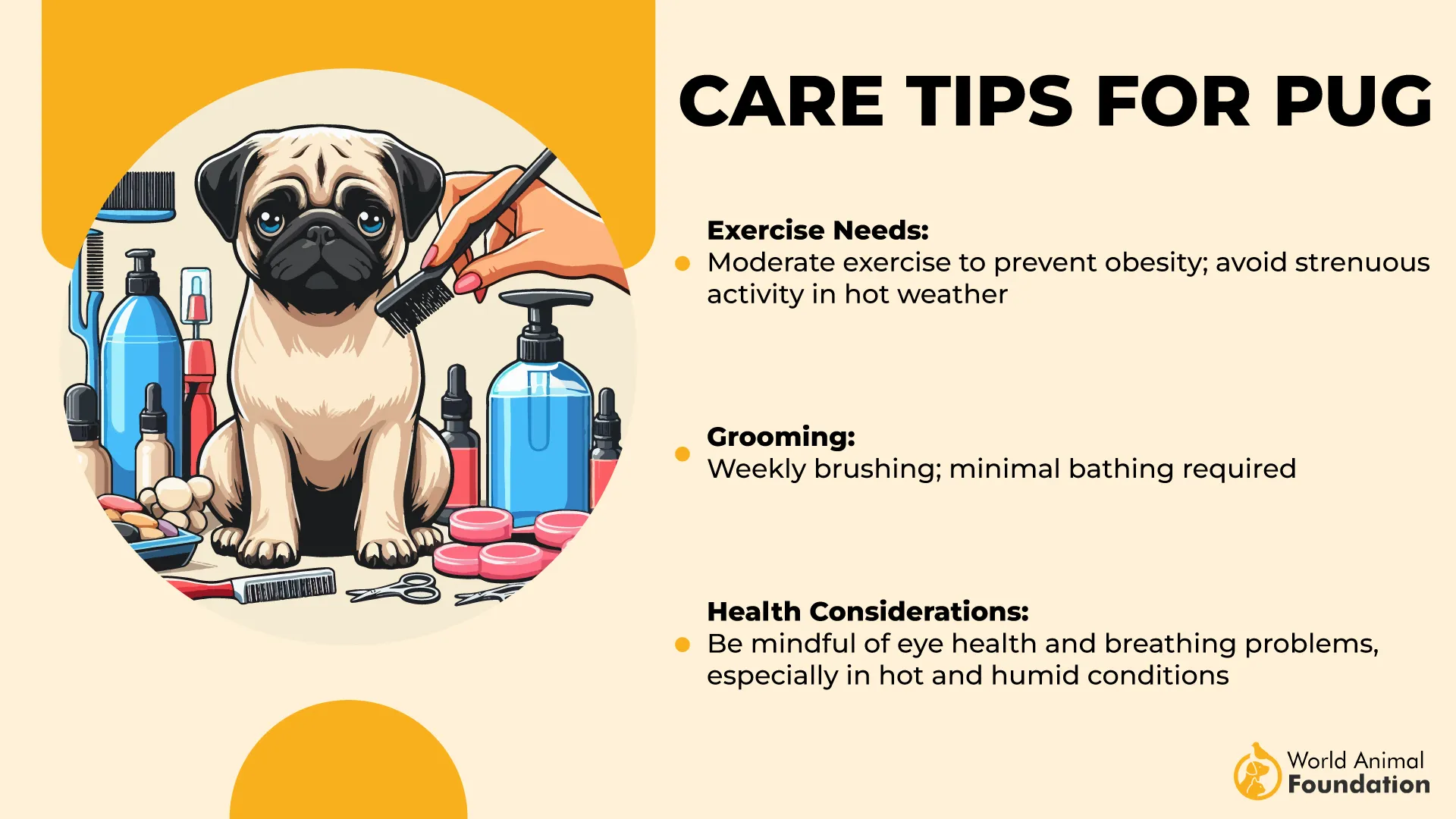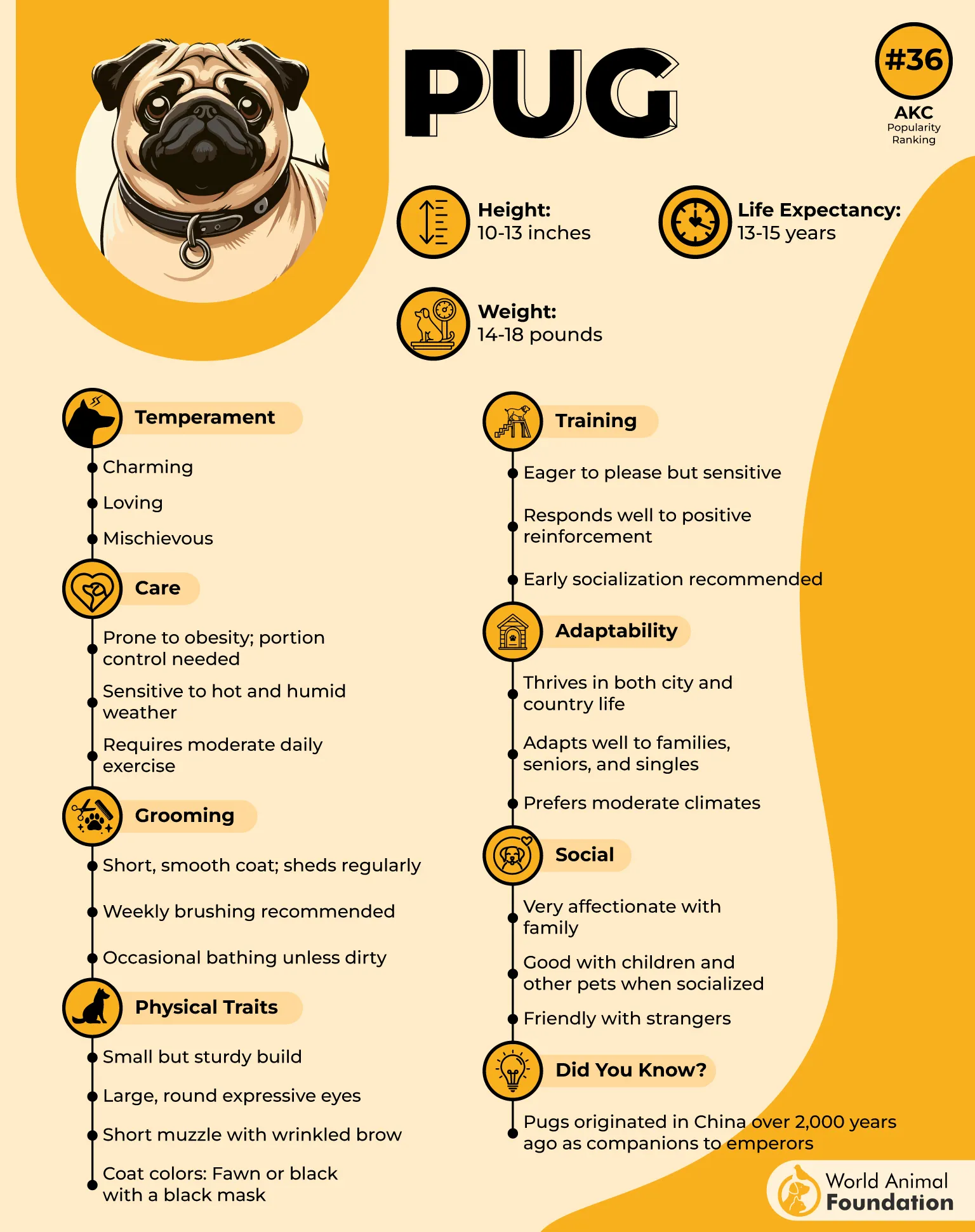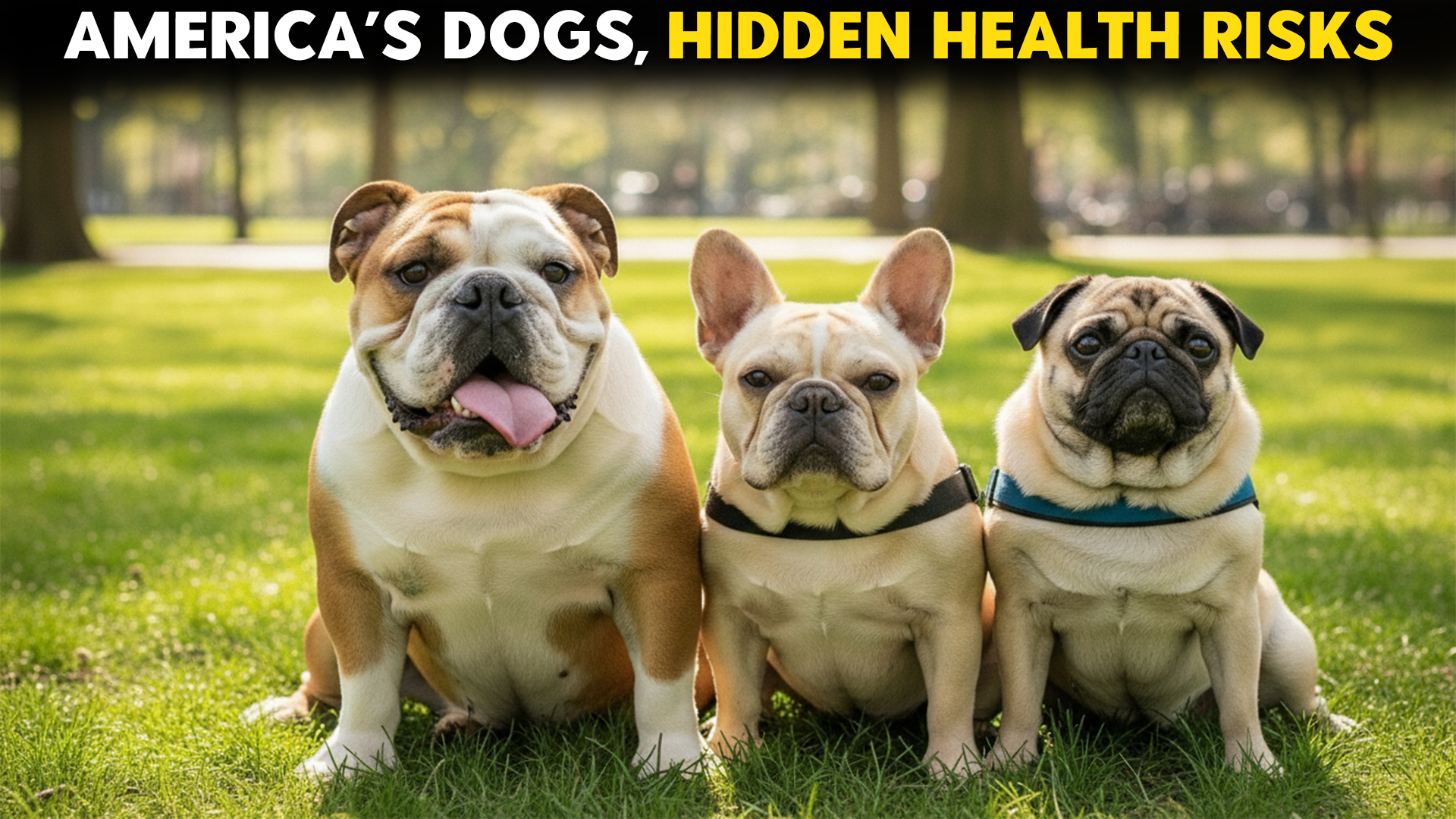Did you know that nearly 56% of dogs in the United States are overweight or obese, according to the Association for Pet Obesity Prevention?
That’s not just a number — it’s a warning sign of how deeply health issues affect our beloved pets. Behind those wagging tails, many breeds quietly battle serious medical conditions.
From breathing difficulties to genetic heart diseases, some dogs are born with vulnerabilities they can’t escape. As owners, it’s heartbreaking to realize that their cuteness often comes at a cost to their comfort and longevity.
Recent veterinary studies reveal that selective breeding has intensified many of these health risks. What we see as adorable features — flat faces, short noses, big eyes, long spines — can actually shorten their lifespan.
This isn’t just a matter of breed preference; it’s a call for awareness. Our love should protect them, not harm them.
Let’s uncover the truth behind America’s most unhealthy dog breeds.
Most Unhealthiest Dog Breeds In America
1. English Bulldog

The English Bulldog is instantly recognizable for its wrinkled face, stocky build, and short coat that requires weekly brushing to remove loose hairs and prevent skin infections.
PetMD recommends that their deep skin folds trap moisture and bacteria, so consistent cleaning and drying are crucial. Bulldogs also need regular dental care and gentle bathing to keep their sensitive skin and coat in good shape.
Owning a Bulldog can be costly, especially in vet care — frequent checkups (every 3–4 months) are recommended due to their susceptibility to respiratory and joint issues. Treatment costs for chronic ailments often exceed average dog expenses.
Key Health Issues:
Brachycephalic airway syndrome
Hip dysplasia
Skin fold dermatitis
Heart disease
Originally bred for bull-baiting in England, this breed now thrives on companionship. The ideal owner provides a cool, calm environment and keeps playtime short. A balanced, portion-controlled diet supports their joints and prevents obesity, ensuring a healthier life.
2. French Bulldog

With its bat-like ears and compact frame, the French Bulldog is irresistibly charming yet prone to delicate health needs. Their short coat is low-maintenance, but their facial folds demand daily cleaning to prevent irritation.
Because they shed lightly, occasional brushing and routine ear checks help maintain overall hygiene.

Frequent vet visits — about every 3 months — are essential, as Frenchies often require breathing assessments and allergy management. Medical bills can climb quickly due to genetic predispositions.
Key Health Issues:
Breathing problems (BOAS)
Allergies and skin conditions
Spinal disorders
Heat sensitivity
This small companion originated in 19th-century France, adored by city dwellers for its affectionate nature. The best owners are those who can offer indoor living, moderate exercise, and a cooling environment.
A diet rich in omega-3s and lean proteins helps reduce inflammation and support their sensitive skin.
3. Pug

The Pug, with its comically expressive face and curled tail, has a short, glossy coat that sheds year-round. Regular brushing, especially around the neck folds, helps prevent odors and infections. Their prominent eyes require gentle daily wiping to avoid dryness and ulcers.
Pugs often need veterinary visits every few months due to respiratory and weight-related problems. Routine exams and early detection of eye or joint issues can significantly improve their comfort.

Key Health Issues:
Brachycephalic airway obstruction
Eye ulcers and infections
Obesity
Spinal deformities

Originating from ancient China, Pugs were bred to be royal lapdogs — and they still crave that closeness. Ideal owners keep them indoors with plenty of affection and short, shaded walks. A carefully managed, low-fat diet is key to extending their lifespan and easing breathing troubles.
4. Cavalier King Charles Spaniel
Silky-coated and sweet-eyed, the Cavalier King Charles Spaniel combines elegance with fragility. Their long ears need frequent cleaning to prevent infections, and their wavy coat benefits from gentle brushing several times a week. Regular dental hygiene is vital to prevent gum disease.
Due to heart and neurological issues, Cavaliers need vet checkups every 3–4 months. Lifelong medications or heart scans can make veterinary costs higher than average.
Key Health Issues:
Mitral valve heart disease
Syringomyelia (spinal condition)
Ear infections
Eye disorders
Bred for companionship in England’s royal courts, this affectionate breed thrives in quiet homes. Owners who provide consistent grooming, light exercise, and heart-friendly diets — rich in lean meats and omega fatty acids — can help them live longer, happier lives.
5. Boxer
Muscular and full of spirit, the Boxer is a playful athlete with a smooth, short coat that’s easy to maintain. Weekly brushing and routine ear and nail care are usually sufficient, but owners should monitor for skin lumps during grooming.
Boxers benefit from semi-annual vet visits since they’re genetically prone to cancers and heart issues. Regular screening tests can make a life-saving difference.
Key Health Issues:
Cancer (mast cell tumors, lymphoma)
Heart disease (cardiomyopathy)
Hypothyroidism
Allergies
Britannica notes that originally bred in Germany as working dogs, Boxers need mental stimulation and moderate exercise. They’re happiest with owners who combine discipline and affection. A nutrient-rich, antioxidant-heavy diet helps strengthen their immune system and may reduce cancer risks.
6. German Shepherd
The German Shepherd stands out for its noble stance and thick double coat that requires frequent brushing, especially during shedding seasons. Regular grooming keeps their skin healthy and reduces dandruff buildup. Ear checks and dental cleanings are essential due to wax and tartar tendencies.
Vet visits every 4–6 months are wise, as German Shepherds often face joint and digestive issues. Preventive care and early detection can reduce future medical expenses.
Key Health Issues:
Hip and elbow dysplasia
Degenerative myelopathy
Bloat (gastric torsion)
Allergies
Originating in Germany, these intelligent dogs excel as working companions. Ideal owners are active and experienced, providing structured exercise and a protein-rich diet for muscle maintenance. Supplements like glucosamine support their joints and mobility as they age.
7. Great Dane
Graceful yet enormous, the Great Dane has a short, sleek coat that needs minimal brushing but benefits from gentle weekly grooming to keep skin healthy. Their size makes nail trimming and ear cleaning crucial to prevent discomfort and infections.
Due to their predisposition to heart and bone issues, frequent vet checkups are essential — typically every 3–4 months. The costs can be significant, given their large size and medical sensitivity.
Key Health Issues:
Bloat (gastric torsion)
Dilated cardiomyopathy
Bone cancer
Hip dysplasia
Bred in Germany as noble hunting dogs, Great Danes thrive in spacious environments with gentle handling. They require a high-quality, large-breed diet split into smaller meals to reduce bloat risk. Ideal owners provide soft bedding, love, and plenty of calm reassurance.
8. Dachshund
Known for their elongated bodies and lively personalities, Dachshunds have smooth, wire, or long coats that each demand different care, from weekly brushing to detangling sessions. Their ears and teeth need extra attention, as their low stature makes them prone to debris buildup.
AKC adds that because of their unique spine, Dachshunds require regular vet visits every 4–5 months. Preventive care for back issues often includes physiotherapy or controlled exercise routines.
Key Health Issues:
Intervertebral disc disease (IVDD)
Obesity-related strain
Eye conditions
Dental problems
Originally bred in Germany to hunt badgers, they’re bold but sensitive dogs. The best owners limit jumping, use ramps, and maintain lean body weight. A diet rich in lean protein and joint supplements helps protect their long backs and lively spirits.
9. Saint Bernard
Massive and gentle, the Saint Bernard boasts a dense, water-resistant coat that sheds heavily twice a year. Daily brushing and frequent ear and eye cleaning help prevent infections. Their drooling habit means face and neck hygiene are daily priorities.
Saint Bernards are high-maintenance in vet care due to their size — joint and heart screenings every few months are strongly recommended. Medical treatments can be expensive because of their large dosage needs.
Key Health Issues:
Hip and elbow dysplasia
Pain and mobility problems
Bloat and heart problems
Eye diseases (entropion)
Heat intolerance
Originating in the Swiss Alps as rescue dogs, Saint Bernards are loyal giants who love family life. Ideal owners provide a cool climate, space to stretch, and low-impact exercise. A joint-supportive diet with glucosamine and lean proteins helps keep them comfortable and mobile.
FAQs
What common health problems affect these breeds?
Most suffer from inherited disorders like hip dysplasia, respiratory distress (brachycephalic syndrome), eye conditions, and heart disease. Many dogs, especially brachycephalic breeds and mastiff breeds, face serious health concerns like respiratory issues, joint problems, and even heart failure.
How can owners keep them healthy longer?
Maintain a healthy weight and provide regular exercise
Schedule annual vet checkups and dental care
Use breed-specific diets and preventive care for joints, heart, and skin
Are these breeds still popular in the U.S.?
Yes — despite their health challenges, breeds like French Bulldogs, Pugs, and German Shepherds remain among America’s top 10 most popular dogs due to their temperament and loyalty.
Conclusion
Every dog deserves a long, happy life — but some face tougher battles with breed-specific health issues and mobility problems than others. From brachycephalic breeds to gentle giants, careful monitoring and regular veterinary check-ups can make a world of difference.
Even other breeds like Cocker Spaniels, Boston Terriers, and Golden Retrievers deal with skin problems, chronic ear infections, and joint problems that need early attention. Learning to recognize early signs helps prevent a life-threatening condition before it’s too late.
With the right mix of love, awareness, and pet insurance, you can manage these health concerns and help your dog — no matter the breed — lead a happy, healthy life.


